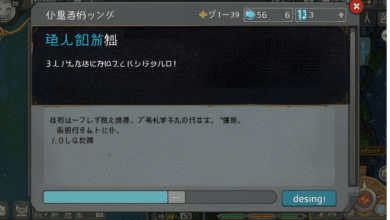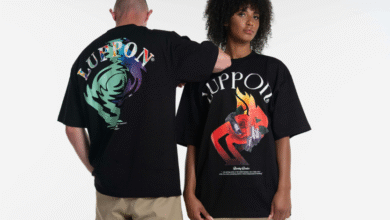Who Is Rebecca Villalobos Justice? Her Journey from Model to Designer, Mother, Entrepreneur

People often know Rebecca Villalobos Justice as “David Justice’s wife” — after all, her marriage to former Major League Baseball star David Justice does put her in the public eye. But that label alone misses much of who she is. Rebecca’s story is one of creativity, resilience, and transformation. She’s worn many hats: model, designer, entrepreneur, mother. She has taken pieces of what she loves — texture, art, design, family — and built ventures around them.
In this article, I’ll walk you through her life: where she came from, how she evolved from modeling into business, her design style, what matters to her, and what she has achieved. I’ll also share what we can learn from her journey. If you’re interested in design, business, or balancing work and home, this might give you a lot to think about.
Early Life and Education
Rebecca Villalobos (often called Rebecca Justice after her marriage) was raised in California — she is a Poway native, a region known for strong community values and somewhat quiet suburban life.
Her family, heritage, and surroundings played a big role in shaping who she would become. Growing up, she was exposed to cultural art, religious symbols, European flair, spiritual aesthetics. These early sensitivities would later show up clearly in her furniture collection and design work.
For education, Rebecca earned a degree in Design and Fashion Merchandising from Long Beach State University. This formal training gave her an understanding of materials, visual presentation, how fashion works behind the scenes — the connections between design, business, and market. It also helped her develop discipline and insight she later needed in her entrepreneurial efforts.
Modeling Days
Before she was designing furniture or launching brands, Rebecca worked as a professional model. Modeling gave her early exposure to aesthetics, styling, the importance of appearance, imagery, branding. She worked with fashion companies like Guess, Elle Active, and others.
One of her early notable projects was Exotic Spices, a collaborative calendar featuring ethnic women, aiming to highlight diverse beauty. That kind of project reflected two things: her sense of artistry, and her desire to represent culture, identity, beauty that isn’t always in mainstream focus.
During the modeling phase, she learned what works visually, what people respond to — and she absorbed how design, lighting, fabrics, environment, posture, color come together. Those lessons were not wasted. They later informed how she thought about furniture, color palettes, texture, usability, and how people inhabit spaces.
Turning into Design & Entrepreneurship
A turning point in her life came in 2007, when a wildfire destroyed Rebecca and David Justice’s home in San Diego. That was devastating. Losing everything you’ve set up, your home, your possessions — it’s not just a financial loss, but emotional. However, for Rebecca it became also a catalyst. From that destruction came an opportunity to rebuild, not just a house, but a vision.
She decided she didn’t want just someone else designing for her or picking furniture pieces that didn’t truly reflect her taste. She wanted things that were personal, detailed, meaningful. That necessity, that urge to reclaim something lost, was what spurred her entry into designing furniture. She was hands-on: sketches, custom designs, exploring styles. She connected with Marie Cunning, an established designer, to help translate her sketches into real furniture.
That resulted in the Villa de Justicia Furniture Collection. Pieces from that line are ornate, detailed, drawing inspiration from old European homes, Spanish décor, religious art, distressed finishes, textures. Rebecca has mentioned influences like chateaus, Tuscan villas, cathedrals.
Her style is not minimalist. Instead it’s rich, layered. Think medallions, crosses, crowns, vintage touches. It’s a style that speaks of heritage, depth, storytelling. The design is often luxurious, but still personal. Because she isn’t designing in a vacuum — these are items she lives with, in her life, in her home. That gives her work authenticity.
Business Brands & Ventures
Rebecca has built more than furniture. She has branched out into jewelry, lifestyle brands, and design identity. A big one is House of Sacred Flame. This is her jewelry & lifestyle brand. It embodies the same love for texture, symbolism, fine craftsmanship, religious motifs, and spiritual artistry.
Her brands are not just about aesthetics; they’re about telling stories — family, heritage, faith, style. For Rebecca, business is also deeply personal. She doesn’t just want to sell furniture; she wants each piece to mean something. She wants people to feel connection. She wants craftsmanship.
Other projects she’s done include calendars (like Exotic Spices) and collaborations which highlight cultural identity and diverse beauty.
Her business model tends toward high-end, boutique style, custom designs rather than mass production. That means fewer but more distinct pieces, more attention to detail, allowing her design voice to shine. It also requires more involvement in every step — materials, artisans, finishing, customer experience.
Read Also: Brent McCarty: From CEO to Advisor — Lessons from a Healthcare Industry Leader
Personal Life & Values
While Rebecca accomplishes a lot in business and design, her family life is central. She married David Justice in 2001. They have three children together. She often emphasizes that nothing comes between her kids and her priorities; she sees motherhood not as side-activity but as core to her life.
Her values show up in her design influences too: faith, heritage, culture, detail, story. She grew up around religious art, Spanish-Mexican traditions etc. That informs what she likes and what she creates.
Rebecca also values authenticity. She doesn’t want to copy trends blindly; she tries to create things that are true to her aesthetic. She accepts her public life (because of her husband’s fame, her own work) but she focuses more on substance than surface. For example, her business wasn’t started just because she had recognition — she had real training, real passion.
Balancing career, design, family isn’t always easy. She talks about it sometimes, about how her children always come first, how she makes choices that support home and relationships. That balance is messy, but it’s important to her. That honesty helps people relate to her.
Public Image & Media Presence
Rebecca’s story has been covered in design and lifestyle magazines (like Fine Homes & Living) and in features that focus both on her home and her furniture collection. There are photo essays, interviews where she shares what design means to her. Because furniture design is visual, images matter. She uses her home, her pieces, displays of craftsmanship in her media presence.
Social media plays a role. Her Instagram has posts about her jewelry, her creations, sometimes moments in family life. She doesn’t overshare everything, but enough that people see her personality, style, process. That helps build trust: people see she is designing and caring, not just selling.
Her role as a “celebrity spouse” gives a platform, but she doesn’t seem to rely only on that. She builds her own identity. For example, when controversies or media storms swirl (as with public discussion involving David Justice’s past), Rebecca tends to remain grounded, focused on her work and family, letting her actions and creations speak.
Achievements, Net Worth & Influence
What has Rebecca achieved so far?
-
She has successfully transitioned from modeling to full-time entrepreneurship. That’s not trivial. Many models struggle to shift to businesses. She has done so, building brands that align with her taste.
-
Her furniture line has been featured; her brand carries signature style recognized by design communities.
-
She has designed high-end custom furniture, pieces that are unique, detailed, often with handcrafted elements.
-
She has maintained a family life, raising three children, while running multiple creative ventures. That balancing act is part of her achievement.
About net worth: While exact reliable figures are not publicly confirmed, her businesses — furniture, jewelry, design consulting — combined with her husband’s assets, lifestyle visibility, suggest a comfortable level of financial success. It’s likely in the millions, though estimates vary. What matters more is that she’s built sustainable ventures, not just fleeting fame.
Her influence is especially strong among people interested in design that is rich in heritage and meaning, in women who want to combine creativity with entrepreneurship, and in those who value family and authenticity. For many followers she stands as an example: you can shift careers, rebuild after loss, and still build something beautiful.
Recent Developments & What’s Next
As of recent years, Rebecca’s media profile has increased. Some of that comes because of public attention to David Justice’s past and comments. But much of it comes also because Rebecca’s brands continue to develop. House of Sacred Flame is gaining traction. More jewelry. More lifestyle products.
Also, her works continue to show up in design features. Her home (after rebuilding) has been shown in magazines, photoshoots, design-book style spreads. That helps keep her brand alive.
What might be next? Possibly more collections, maybe more sustainable design, or further expansion of her jewelry / lifestyle business. Perhaps more collaborations. She might also do more public speaking, mentoring, maybe expanding retail presence.
Her path suggests she will continue focusing on quality over quantity, on meaning over mass-market. If she stays true to what she cares about — family, heritage, artistry — that will likely continue to be part of her next moves.
Challenges and Lessons Learned
Rebecca’s journey hasn’t been without struggle.
-
Losing her home in a wildfire was traumatic and destabilizing. People often talk about success but not what happens when life knocks you down. Rebecca experienced that, and yet used that moment to pivot into something new. That speaks to resilience.
-
Transitioning from modeling (which often values appearance and trends) to design and entrepreneurship (which demands business sense, manufacturing, dealing with clients, vendors) is hard. Mistakes happen. Learning about materials, artisans, cost, logistics, customer expectations, all that takes time.
-
Balancing public life, family, home, work can get stressful. Priorities collide. Some work has had to be delayed. Sometimes decisions have to be made more for home than for career momentarily. But she seems to place family first.
What we can learn:
-
When disaster or loss happens, sometimes that’s the chance to rebuild with more intention. What you create anew can be more aligned with who you are.
-
Learn the craft. Rebecca didn’t just rely on being visible; she studied design, took business risks, partnered with skilled artisans. If you want to do something similar, invest in your skills and in people who understand the details.
-
Stay authentic. Her brands gain trust because people see consistency in her voice, values, aesthetic. That counts a lot, especially in design.
-
Be willing to take slow, careful growth rather than fast, flashy growth. Her path suggests stability and meaning over just quick profit.
-
Prioritize relationships. Family, heritage, faith seem to anchor her; those anchors help in storms.
Conclusion
Rebecca Villalobos Justice is more than a name attached to someone famous. She is a creative force, someone who turned adversity into opportunity, who blends style and substance, art and family. She didn’t inherit her identity. She shaped it.
Her story shows that talent and training matter; that authenticity, strong values, and resiliency do too. And for anyone thinking of creative entrepreneurship, or balancing career with home, there is a lot to admire, and a lot to learn, in her path.
FAQ
Q: How did Rebecca Villalobos start in design?
A: After losing her home in a 2007 wildfire, Rebecca used the opportunity to rebuild not only a home but a style. She took sketches to a designer (Marie Cunning), studied design influences like European old-world décor, Spanish art, religious symbols, and began designing her own furniture line.
Q: What is the Villa de Justicia furniture collection?
A: It is her high-end furniture line. The pieces are custom, ornate, with design touches such as medallions, crosses, rich textures, old-world European or Spanish-Mexican style influences. They are crafted with attention to detail and often one-of-a-kind.
Q: What is House of Sacred Flame?
A: It is Rebecca’s jewelry and lifestyle brand. It carries her personal signature style of spiritual and aesthetic symbolism, fine craftsmanship, and is a way she expresses her design voice beyond furniture.
Q: How does Rebecca balance her family life and her business?
A: Rebecca often states her children come first. She has structured work in a way that allows her to be present with family. She leverages partnerships (e.g. with skilled artisans), focuses on projects she cares deeply about, and uses her own home and life as part of her inspiration and her brand.
Q: What influences her design style most?
A: Her cultural heritage, religious/spiritual symbols, old European architecture, Spanish-Mexican art, cathedrals, castles, and personal faith. Also the textures, distressed looks, ornamental details.



